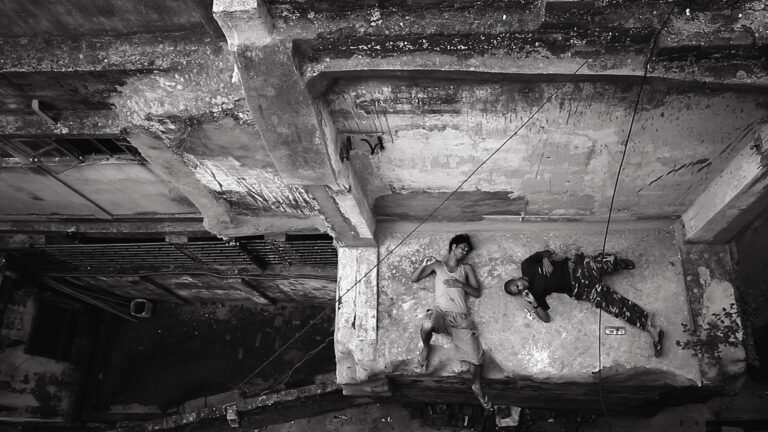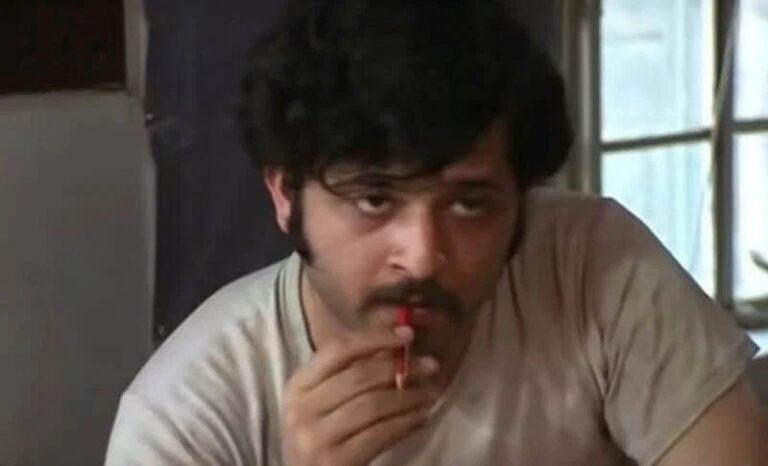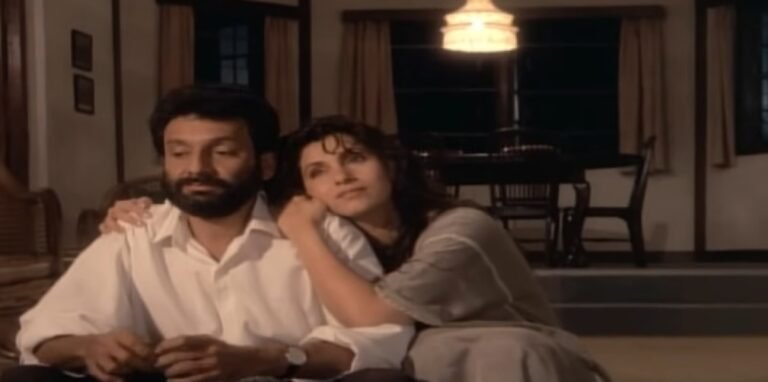When it comes to wacky, eclectic films in Indian cinema, Om Dar-B-Dar is likely the film you’ll find everyone recommending.
What’s going to be harder to find, though, is an explanation for its story in grave detail. Funnily enough, though, that’s by design, as director Kamal Swaroop intended for the story to be based more on emotions than on any particular strain of logic.
Still, this once-banned but now-cult classic film manages to tell its story… even if it doesn’t end up being everyone’s cup of tea.
Disclaimer: Om Dar-B-Dar is a film that relies heavily on religious and mythological symbolism, and discussions regarding the same are an integral part of understanding this film. We have researched these topics in-depth so as to ensure the veracity of the claims we make. However, since we are unfamiliar with many aspects of mythology — coupled with the fact that this movie is not always rooted in pure logic — do forgive us if we have faltered in any interpretations.
Consider yourself warned: Spoilers Ahead!
Table of Contents
Om Dar-B-Dar Plot Overview
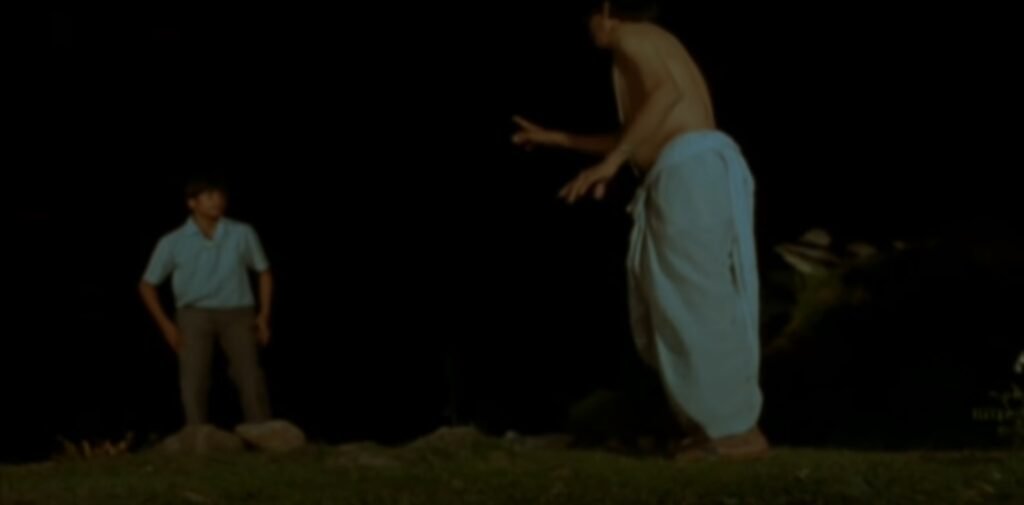
Om Dar-B-Dar follows Om, a young boy who lives in a village in Rajasthan, as he grows up and his eventual death.
When Om was born, his father (referred to as Babuji throughout the film) discovered that he would die after he was 17, according to astrology. So Babuji changed the child’s name to Om to prevent his demise.
Om has an older sister, Gayatri, who becomes involved with a man named Jagish and provides a unique female perspective on things in Om Dar-B-Dar…which we shall discuss further in the article.
As Om Dar-B-Dar progresses, we see the namesake character grow up from a young boy into a disillusioned man — and how systemic issues like caste and religion ultimately impact him in life and death.
Om Dar-B-Dar Ending
Is Om Dead?
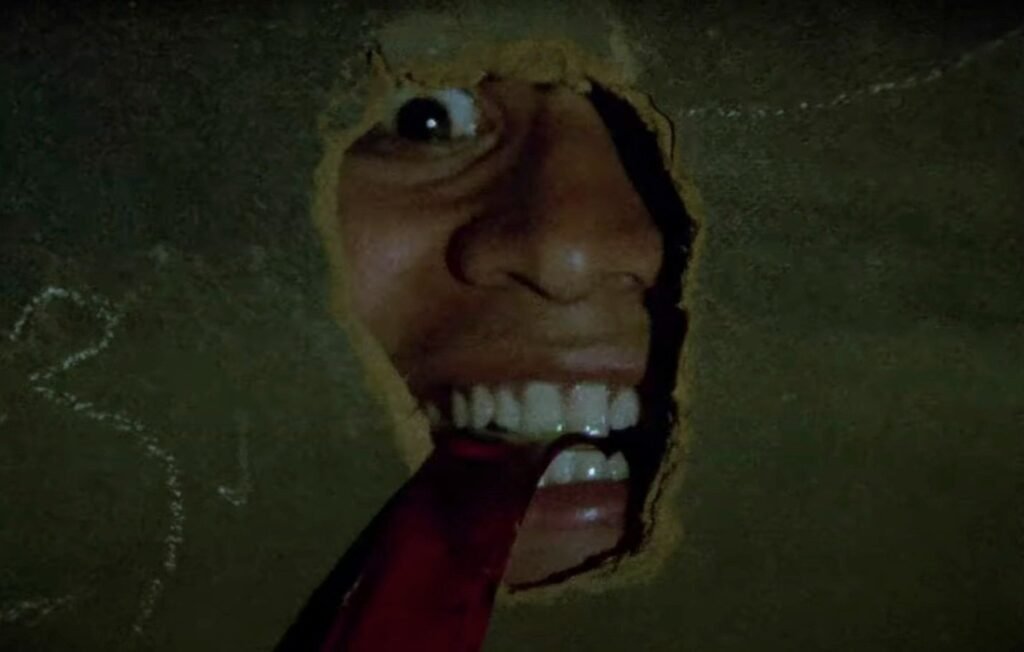
Yes, towards the end of this postmodernist film, Om has died.
As Om grows up, he goes from his village to Pushkar, a rather divine site, where a local Brahmin discovers his unique ability to hold his breath underwater for a long, long time during the Pushkar festival in the Kartik Shukla Paksha (waxing moon phase within the Hindu lunar month of Kartik, which lasts from October to November in the Gregorian calendar).
The Brahmin’s idea is “simple” — Om should hold his breath underwater and come up at midnight in a sort of “darshan” to the myriad visitors of Pushkar.
It ends up being rather successful and puts Om on the (local) map, with individuals coming to see him. A company called the Pushkar Kaya Watch also harnesses Om’s breath-holding ability in order to market their underwater watch (and he seemingly features in their ads as well). A brand called ‘PROMISE’ that sells toothpaste also seeks out the young lad.

This also sparks the Saans A Ra Andolan (or the breath-holding movement) in what appears to be a mass protest against Brahma (the Hindu creator god) for revoking Pushkar’s status as “heaven on Earth.”
In a conversation, Om’s friend Atlas points out how people will be rebelling by holding their breath, but for the titular character, holding his breath is what he’s known for — and therefore can’t be his form of rebellion.
Instead, to join this “protest,” Om would have to breathe underwater — but that would cause him to die. Atlas also points out that at this moment, the underwater watch will also “die,” and in effect, Om has signed up for his own “murder plan.”
Alas, things panned out exactly as Atlas had warned Om.
In the end, the postmortem report showed that Om had died from ruptured lungs because he breathed underwater.

Symbolically, it seems that Om’s death is not heroic but instead is a fragmented, ironic end. To some extent, it showcases the inherent meaninglessness of life as well as the fact that most rebellion is shaped by larger systems that wouldn’t hesitate to consume the person — if that is what is necessary.
In other words, in a scathing critique of capitalism and the caste system, Om Dar-B-Dar drives home the idea that the needs and wants of institutions are more important than the individual’s.
The human cost is a mere formality/legality that, in most cases, can just be brushed aside — or, in this case, drowned.
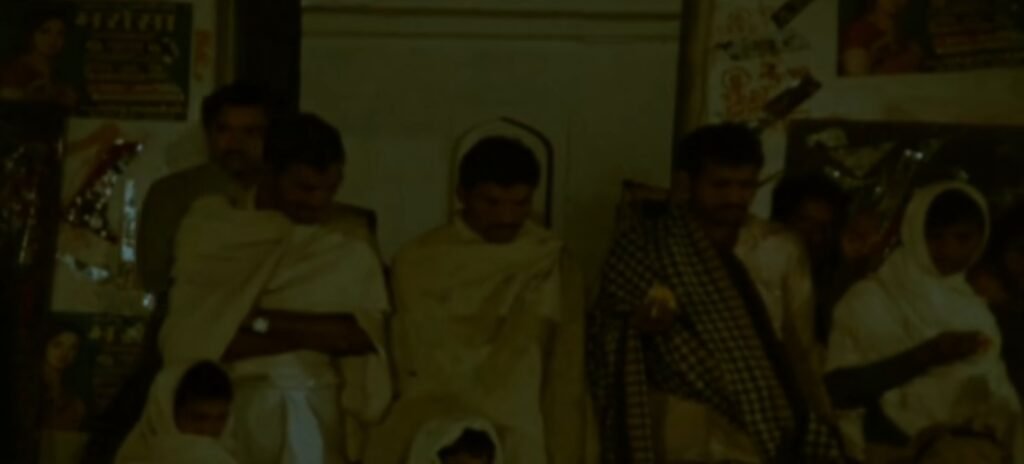
Another interesting theory is that Om may have been subjected to cyanide (KCN) poisoning.
KCN is a compound used in photography — and remember, Babuji took many photos of Phool Kumari when she first showed up, so it was likely present around Om.
Moreover, according to the CDC’s National Institute for Occupational Safety and Health (NIOSH), some symptoms of KCN poisoning include confusion, restlessness, headache, and an increase in the rate and depth of breathing (hyperpnea) — all of which we see with Om, with the last symptom being something he gets famous for.
In one of the last scenes, Jagdish also writes “Test Om” in his diary alongside “KCN” — so is there something more to Om’s health than meets the eye? It makes for a fascinating theory, but due to more credible evidence pointing in it’s direction, we don’t know for sure.
How Casteism and Religion Impacted Om

Another way to interpret the ending is that Om became a victim of the capitalist system and casteism prevalent in the country. After all, in the very beginning, Om reveals how his family belong to the lower class and that his grandfather, back in 1922, pretended to be an upper-caste Brahmin while travelling in a train compartment.
Eventually, Babuji, a gazetted officer, also made fake caste certificates for beggars and members of the lower class (who had been subjected to generations of misfortune and poverty) so that they, too, could succeed in life. This is the very reason he was fired from his government job and opened up his own astrology venture.
Speaking of astrology, as mentioned before, Babuji changed his baby boy’s name to Om because, according to the stars, the child would otherwise die after 17. Babuji’s logic was that “Om” had not been heard in the Yam Lok (the underworld).
So, from the get-go, it is evident that the class system and religion have impacted Om in a capacity out of his control.
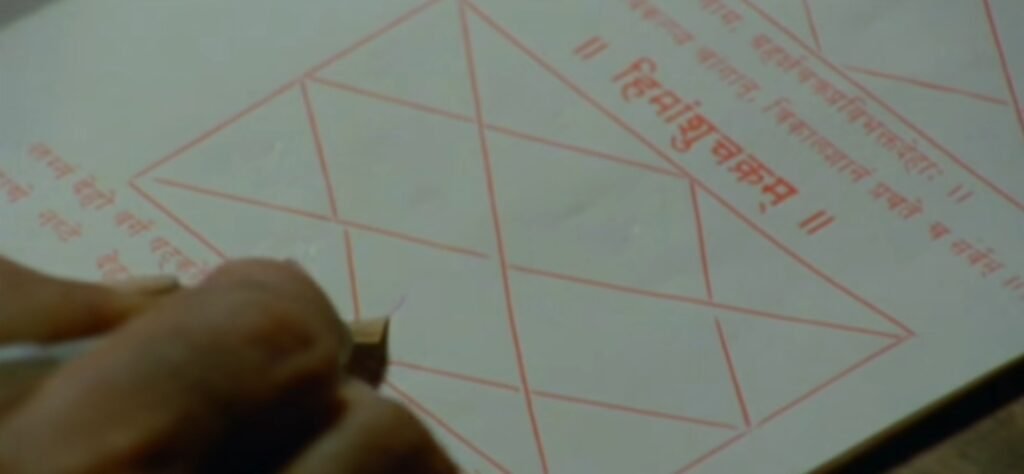
As Om grows up, he seems to embody this semi-rebellious spirit which is evident not only in his ability to hold his breath for a long duration (which seems to be contempt for life) but also in other acts like throwing his cycle off a cliff and even kicking off the blanket his father puts on him.
There are other motifs, such as Om’s nose bleeding whenever he tries to study and Phool Kumari making him wear black sunglasses (like James Bond), that seem to hint at Om’s disillusionment with life and society.
A review written by Devdutt Trivedi for Cinematic Illusions sheds more light on this symbolism: “The dark glasses, both a reference to the fashion of kitsch Bollywood heroes and blind men, makes Om a sitting duck in the hands of town and city-based capitalists… The glares prevent Om from seeing his own situation as a lower caste boy who is going to be exploited.”
In an interesting detour, “Om/Aum” is also considered to be the “sound of creation,” as per Lotus Sculpture. According to the website, in Hindu and Buddhist mythology, “Om is the primordial sound, the first breath of creation, the vibration that ensures existence” — and it is meant to represent Brahma.
So we’re sure you can see the irony of Om protesting “Brahma’s breath” by… not breathing during the Pushkar festival.
Is Babuji Dead?

Yes, Babuji dies due to a curse Phool Kumari put on him for being wrongly accused of stealing the diamonds.
According to this curse, if she was lying, then she would die upon leaving the house. Alternatively, if she isn’t lying, then if Babuji were to leave his house for any reason, he would pass away.
After Om runs away from home, and then comes back, his father chases him to confront the protagonist. In doing so, Babuji dies.
Babuji’s character is the embodiment of the average Indian. Even today, people are driven by religious, mythological, social and cultural beliefs that shape their lives in many different ways.
Is it inherently wrong to rely on “ancient wisdom” to deal with the vastness of life and the unknown? Not in and of itself, no.
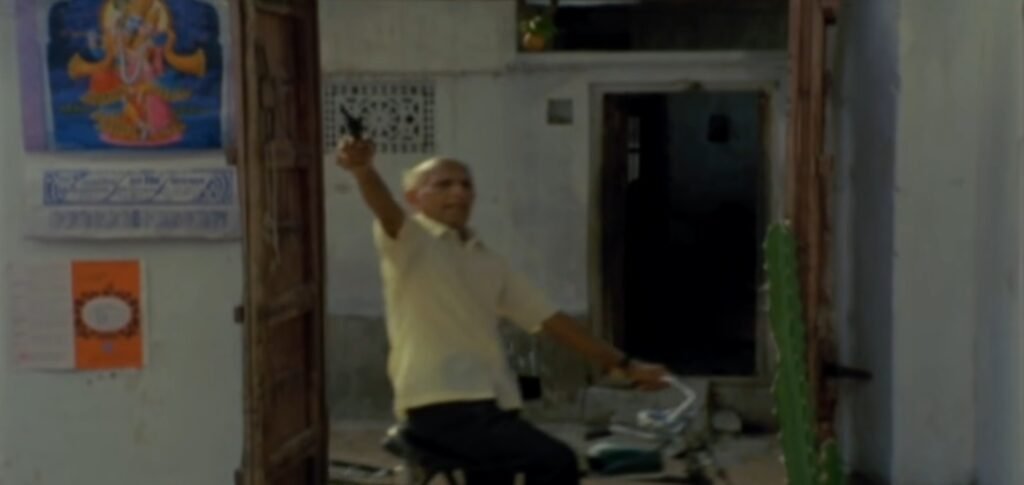
However, the larger point this film seems to be making is that, more often than not, these systemic and institutional factors determine the life a person ends up leading, and it often robs them of their own autonomy in the process.
Even if they do try to do things their own way, then things like caste and religion (not spirituality) can end up being a hindrance as opposed to a boon.
In Babuji’s case, he changed his son’s name to Om due to his firm belief in astrology. Even when he tried to “fight” the system and help the impoverished, it ended up costing him his government job and further increased his reliance on astrology.
Even when he aids Lala Lotamal, who is afraid of another world war, by safekeeping his diamonds, Babuji indirectly ends up dying due to the entire dilemma.
It seems the bigger question presented via Babuji’s character is this: if nothing in life is guaranteed and one’s actions won’t always have the consequences they desire, then does it really make sense to rely on old, archaic institutions to keep up with social hypocrisy?
Who is Phool Kumari?
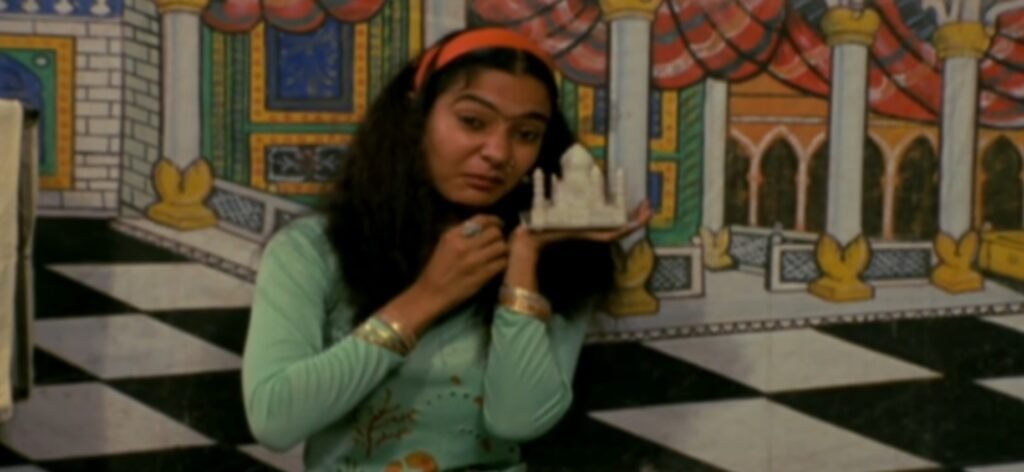
Phool Kumari is, perhaps, the most mysterious character in Om Dar-B-Dar. She comes out of nowhere and leaves after putting a curse on Babuji, so the film really doesn’t give us any clues about her background.
In one of her first scenes, she talks about wanting to find commercial success as an actress (like Hema Malini) and also comes to Babuji and Gayatri for help with the same. However, while she doesn’t have any money to pay, she ends up replacing Jagdish and their typist and becomes embroiled in their daily lives.
If nothing else, Phool Kumari seems to be an agent of chaos. While her name is an innocent one (meaning “flower girl” in Hindi), Jagdish talks smack about her to Gayatri by claiming Phool Kumari is “Rosemary Marlow” (a crass pun in Hindi that translates to “f-ck me every day”).
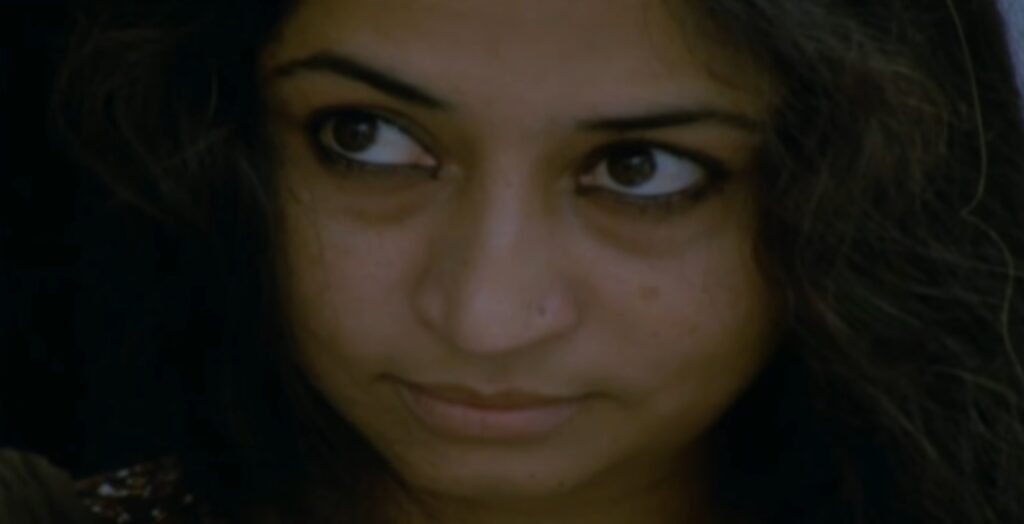
While Gayatri, as a character, becomes less timid over time, Phool Kumari is loud and assertive from the get-go. The latter is the personification of female ambition, sensuality, and modernisation.
One might also argue that Phool Kumari seems to portray a femme-fatale type of character, and maybe the James Bond she makes while handing Om the dark shades is a testament to the same.
Phool Kumari challenges the patriarchal system prevalent in the house and curses Babuji in what could be dubbed a power move for the time. So, whoever she is, it is safe to say that she challenges certain notions about women and feminism at the time.
Side Note: While there’s no knowing how feasible this next theory is due to Om-Dar-B-Dar’s postmodernist vibes, Phool Kumari could also be someone sent by capitalistic brands in order to harness Om’s unique ability. After all, there is a scene where she says she’s willing to do whatever it takes to make it big, and then we see scenes later on where Phool Kumari (and once, even Om) appear to be in an ad for the toothpaste brand PROMISE.
Does Gayatri Die? Whose Baby Do We See in the End?
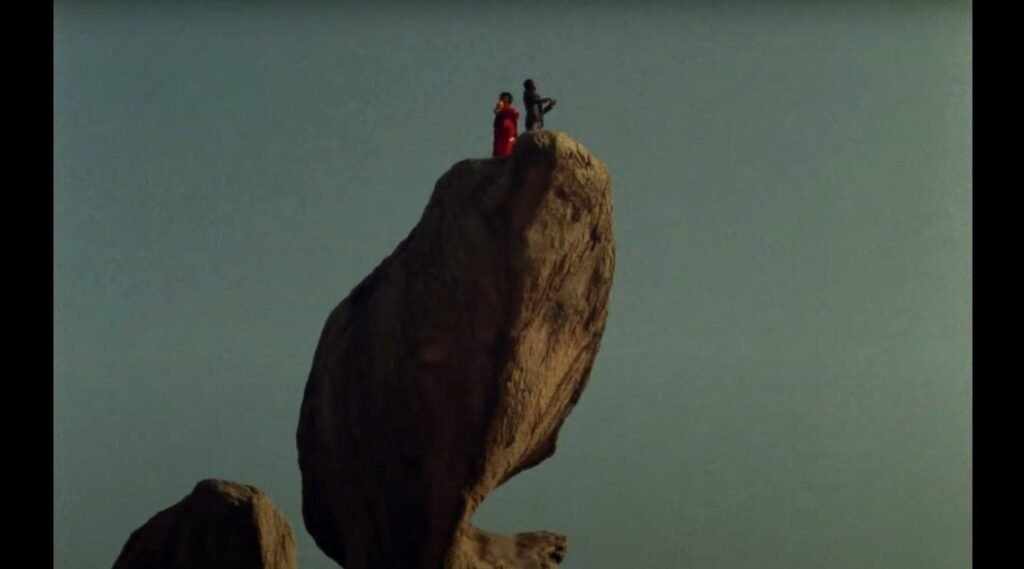
After Phool Kumari takes over the typing gig from Jagdish, he leaves for Dubai and practically abandons Gayatri.
After Babuji dies, he happens to come back to the rural house and see a different Gayatri — one who seems to have delivered his child after they slept together.
For reasons unknown, Gayatri and Jagdish plan to kill themselves by ingesting KCN, but in the end, only he consumes it before saying the word “Gobar,” which likely means that the cyanide tastes like cow dung.
Gayatri, however, doesn’t ingest the KCN and instead makes her way home.
So no, ultimately, Gayatri doesn’t die.





